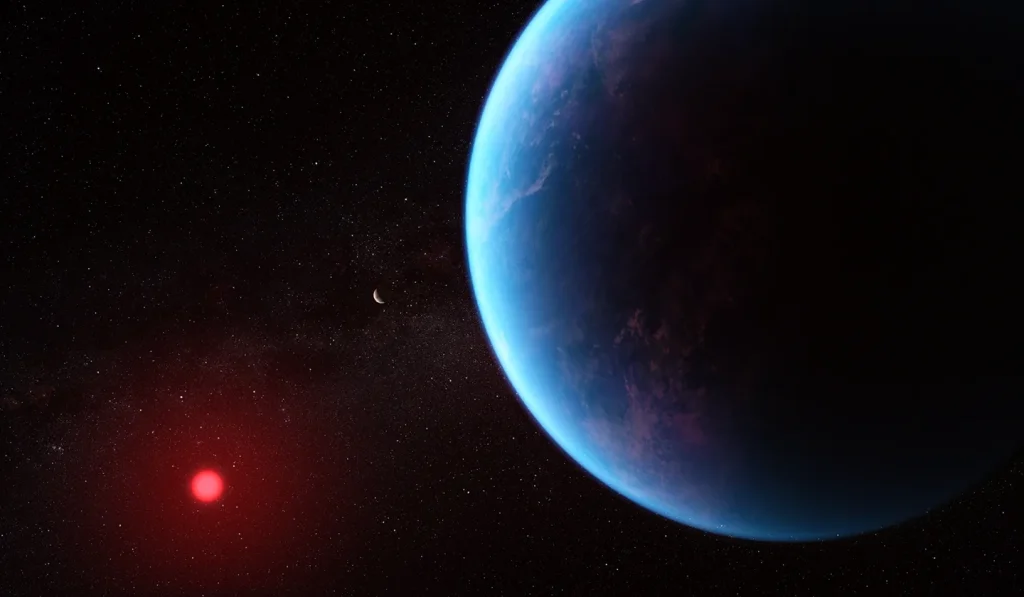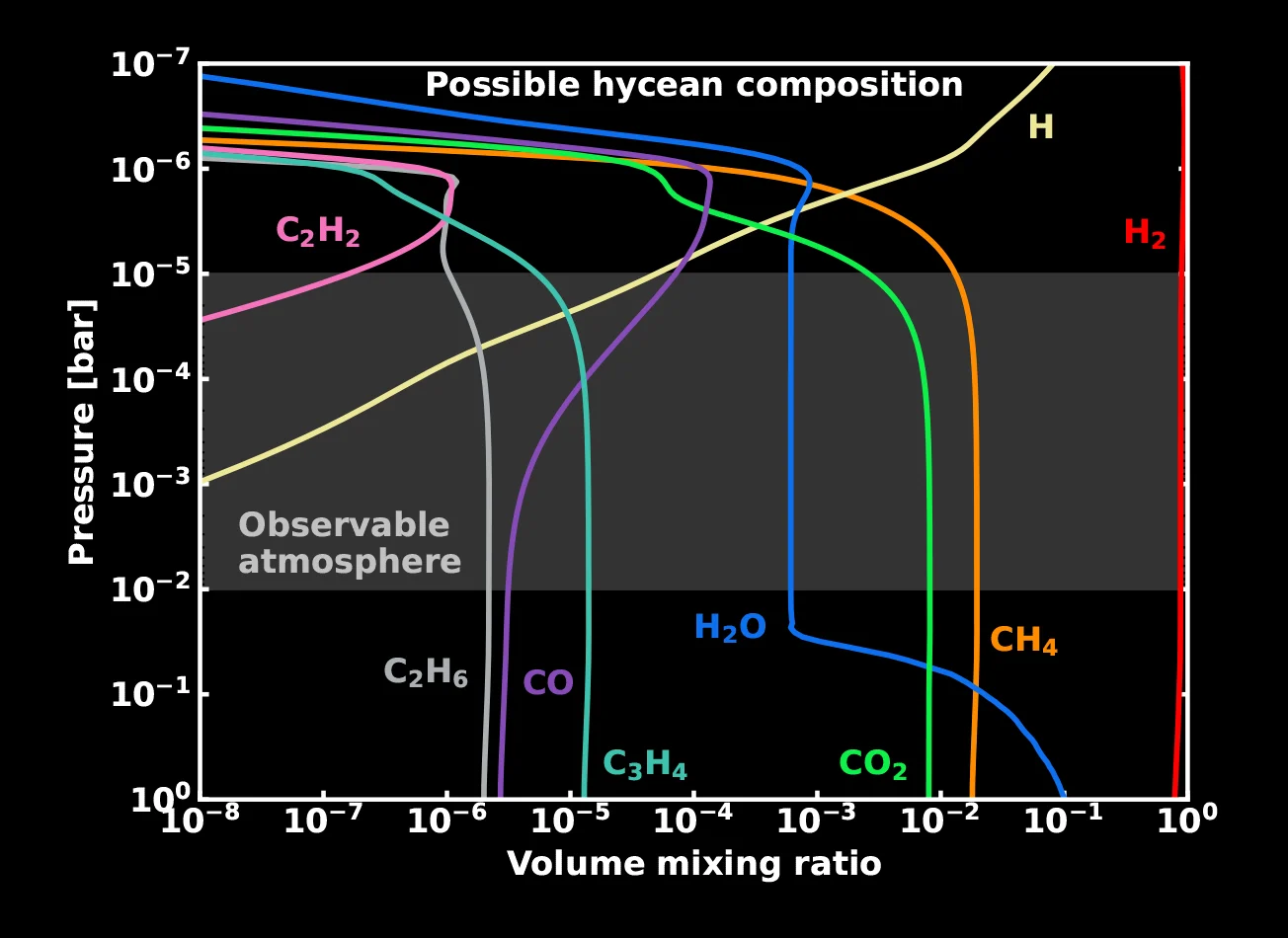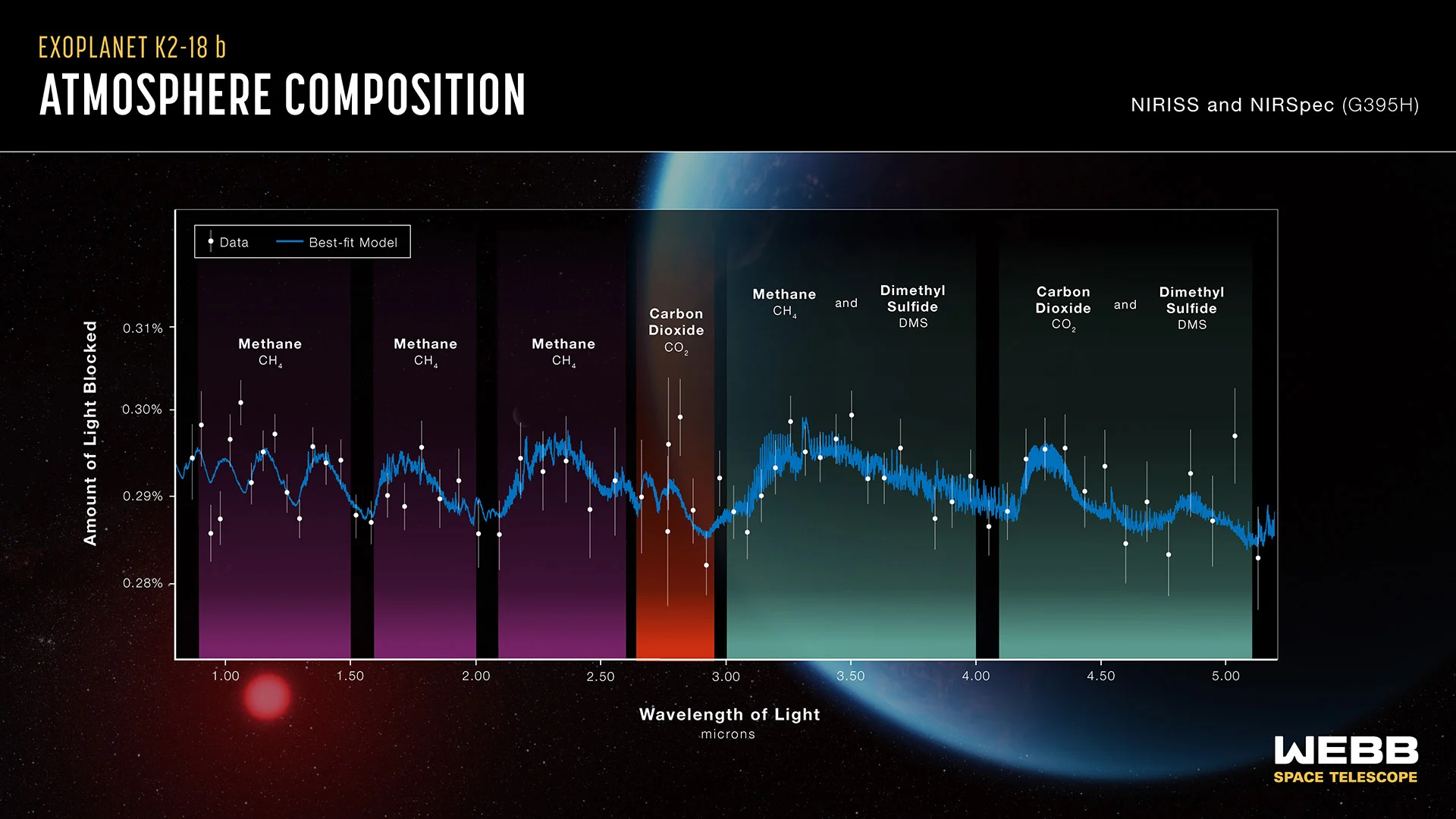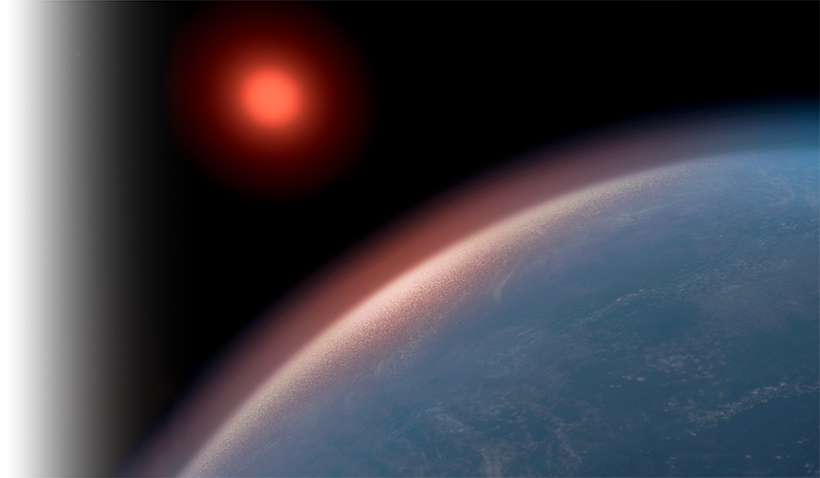The atmosphere of a planet is a critical factor in its habitability.
Central to the definition of a hycean planet is the presence of a habitable ocean-covered surface underneath a hydrogen-rich atmosphere. The properties of the atmosphere, such as the composition, temperature structure, and the presence of aerosols, affect the temperature of the ocean underneath.
The interplay between the atmospheric winds, the propagation of light, and the chemical reactions governs the chemical composition and temperature structure of the atmosphere, which ultimately determine whether the ocean is conducive to hosting life. From our perspective many light years away, spectroscopic observations of the atmospheres using state-of-the art telescopes can provide important insights into these atmospheric processes and surface conditions. Our research focuses on detailed theoretical modelling to understand such processes and state-of-the-art spectroscopic observations to identify which planets are hycean worlds.

Atmospheric Composition
For hycean planets, which are characterized by hydrogen-rich atmospheres overlying deep global oceans, the atmospheric composition is both unique and complex. Besides molecular hydrogen (H₂) and helium (He), the other molecules present in the atmosphere depend on various physical properties of the atmosphere. These include the temperature structure, the size of the atmosphere (or equivalently surface pressure), chemical interactions with the ocean surface, potential biogenic gases, among others factors. Many of these factors are unknown for hycean worlds, including the initial conditions set by how the planet formed, which makes computational modeling of their atmospheric chemistry challenging. Nevertheless, theoretical studies in recent years have provided initial insights into the possible compositions of hycean atmospheres. A review of such studies can be found in some of our recent works: Madhusudhan et al. (2023a) and Cooke & Madhusudhan (2024).

The atmospheric composition of a hycean world is expected to show some distinct chemical fingerprints. Most notably, hycean atmospheres can be enriched in methane (CH₄), heavier hydrocarbons, and/or carbon dioxide (CO₂), while simultaneously showing a depletion in ammonia (NH₃), which dissolves easily into water. Another important molecule is water vapour (H₂O) which may or may not be observable in the visible atmosphere depending on the temperature structure: at cooler temperatures H₂O would rain out, making the observable atmosphere drier. Another indicator is a high CO₂-to-CO ratio, greater than 1. Depending on the thermal and chemical structure of the atmosphere, other species may also be present in appreciable amounts. In particular, biological activity on such planets, could produce potential biosignature gases such as dimethyl sulfide (DMS). Observations of the candidate hycean world K2-18 b are consistent with these expectations (Madhusudhan et al. 2023b).
Temperature Structure

The temperature profile of a planetary atmosphere, the variation of temperature with height, influences its climate, chemical processes, and potential habitability. For candidate hycean worlds, it determines the state of water underneath the atmosphere, e.g., whether it can remain in liquid state and is conducive for habitability. In turn, the atmospheric temperature profile is determined by the interplay between a range of factors, including the incoming stellar radiation, the chemical composition of the atmosphere, reflection of star light by aerosols (i.e., albedo), internal heat, and atmospheric dynamics. In such planets, hydrogen acts as an excellent greenhouse gas. A wide range of temperature structures are possible in hycean worlds depending on these factors (e.g., Madhusudhan et al. 2020, Piette & Madhusudhan 2020, Madhusudhan et al. 2021, Leconte et al. 2024).
For a given stellar irradiation, the most critical factor determining the temperature structure is the albedo, due to reflection caused by clouds or hazes. A higher albedo implies lower starlight absorbed in the atmosphere and hence lower temperatures. Even for the coolest candidate hycean world, K2-18 b, an albedo greater than 0.5, meaning that half or more of the incoming starlight is reflected away, is required for maintaining the temperature structure cool enough to sustain liquid water on the surface (Leconte et al. 2024). This is within the range of albedos of most solar system planets (0.3-0.8). More irradiated hycean worlds will require higher albedos. This requirement is due to hydrogen being an excellent greenhouse gas.
Spectra and Retrieval
An exoplanetary atmosphere interacts with the starlight passing through it. The atmosphere can be observed through its imprints on the star light passing through it, known as transmission spectroscopy. Key molecules in hycean atmospheres, such as CH₄, CO₂ and H₂O, interact with infrared light depending on their unique chemical properties and on the temperatures and pressures at which they are found, which lead them to absorb light in different amounts at different wavelengths. Clouds and hazes also affect light in unique ways. All of these effects, together, give rise to the observed atmospheric spectrum. Observations of these spectra can therefore be used to infer the molecular composition, presence of clouds/hazes, and the temperature profile at the day-night boundary of the atmosphere, which is probed by transmission spectra. Research in our team involves extensive use of spectroscopic observations to study hycean atmospheres.

The atmospheric properties of an exoplanet are derived from the transmission spectrum, using the technique of atmospheric retrievals. Our team has made pioneering contributions to the development of atmospheric retrievals for exoplanets; a review of atmospheric retrievals can be found in Madhusudhan (2018). This involves simulating millions of model atmospheres, with different compositions, temperatures and clouds and/or hazes, calculating their spectra and comparing them to the observations. By using Bayesian statistics to explore how well the different model atmospheres match the observations, retrievals can find which values of each parameter (e.g., temperature, abundance of each molecule, cloudiness) are most consistent with observations, as well as what the uncertainties on these values are. Furthermore, by comparing how much the inclusion of a specific molecule in the model improves the match with observations, it is possible to measure the confidence with which various chemical species are detected in the atmosphere.
Receive Email Updates
As we add news and content to the website, we'll email you to keep you updated!


